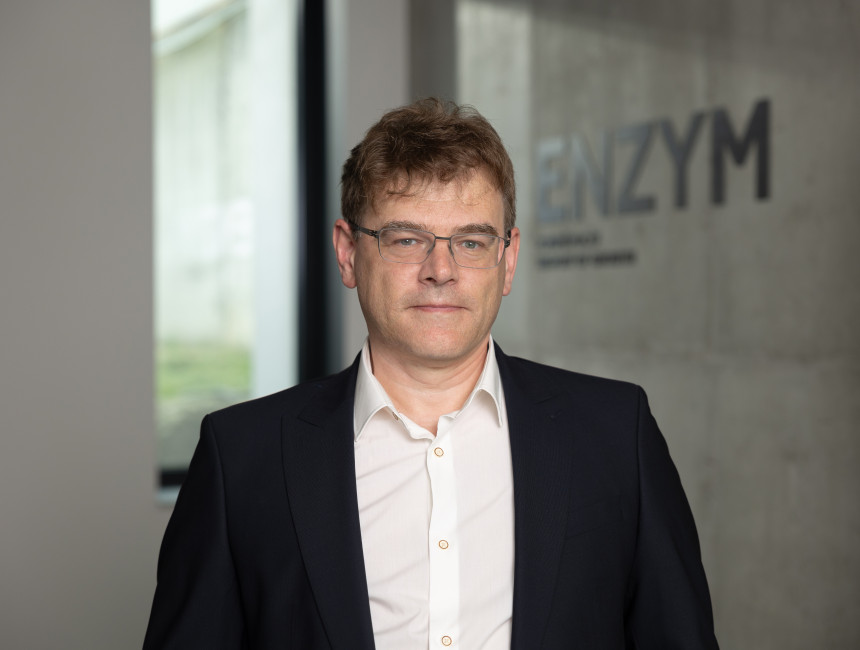In 2022, Enzym Group launched a biotechnology yeast product plant and introduced yeast flakes for healthy eating to the Ukrainian market.
For the controlled release of new products, the company uses TRL (Technology Readiness Level) - a technology maturity scale developed by NASA and integrated into ISO standards.
The TRL model involves not only Enzym Group's R&D center, but also the technological development department and production - to ensure scaling from laboratory to series.
Why TRL: innovations that reach production
In innovative industries, only about 10% of developments reach serial production - the majority stop at the stages between laboratory and production ("valley of death"). Enzym Group systematically minimizes this risk by managing each step through the TRL framework (levels 1–9 - from basic principles to stable serial production).
How it works at Enzym Group: 9 main stages
Stage 1. Formation of the basic principles of technology: laying the foundation for innovation At this stage, it is important to synchronize within the team. Determine and record what the product should be like so that everyone understands the essence of the development and idea in the same way.
Stage 2. Work at the laboratory stage: from theory to experiment The second stage includes searching for a theoretical basis, available data, obtaining samples from the market, and analyzing them. All this will help to understand which technology will allow us to get the desired result as quickly as possible. Based on this, we formed a product design.
Stage 3. Experimental confirmation of the concept: testing the technology for viability We ordered research in the expertise centers of the Netherlands, then conducted testing in our laboratory. The results confirmed that thanks to a specific technology, we will be able to obtain flakes from yeast concentrate of baker's yeast.
Stage 4. Technology validation in laboratory conditions: a miniature factory Our development laboratory has its own pilot line, which allows us to produce test batches on equipment that is as close to production as possible. Here we make sure that our technology is not a happy coincidence, but a controlled result. Then we form a laboratory production schedule: we make a list of indicators, parameters and actions on pilot equipment to obtain the desired product.
Stage 5. Confirmation of the possibility of industrial production: from the laboratory to the assembly line The key task is to check whether we can scale the technology in production conditions. Then there are two ways: either we return to the technological development stage and improve it, or we move on to the next step.
Stage 6. The first prototype in industrial conditions: one step closer to reality This is where the product prototype appears. We check in production conditions whether we managed to achieve the product characteristics set in stage 3. The flake prototype was as close as possible to the final result. Otherwise, we would have returned to the previous stages.
Stage 7. Testing and scaling the technology: testing test batches on the foreign market Test batches can go beyond production after confirming reproducibility and compliance. Having made sure that the flake prototype meets our expectations, we offered samples to key customers to get the first feedback. Here we were one step closer to production.
Stage 8. System classification and confirmation in production conditions: preparing for serial production At this stage, we optimize qualitative and quantitative indicators. We draw up industrial regulations - a document that regulates the production process and ensures the stability of product reproducibility and repeatability of the result. Only after that do we launch production.
Stage 9. Production on a permanent basis: completing the cycle After the serial launch, permanent batches are created in already standard production conditions. In the future, we only conduct periodic supervision.
Flakes Enzym Group — from idea to export
Despite the full-scale invasion in 2022, Enzym Group launched a biotech plant and brought yeast flakes to the Ukrainian market. The product has passed the full TRL cycle — from laboratory development to serial production and the first export experience to EU countries; deliveries to the USA are being prepared.
The line includes options with spirulina, carrots, Mediterranean herbs; flakes with a mixture of chimichurri spices are in preparation.
Distribution: available online in Ukraine; scaling of channels abroad is ongoing.
TRL disciplines the process: we clearly see at what level of maturity the technology is and what is needed to move to the next stage. This shortens the path from idea to stable series,” — the team of the Enzym Group R&D center.
Why NASA logic is useful for business
Controlled scaling: processes from the "flask" are reproduced on industrial equipment with controlled variability.
Transparent economics: at each TRL level - clear costs, risks and quality criteria.
Cross-functional interaction: R&D, technological development and production work as a single system.
Enzym Group continues to invest in science-intensive products based on yeast cells and scale to be able to develop them through the TRL model - from food ingredients to solutions for related industries. The goal is to sustainably translate innovations into commercially viable products in domestic and foreign markets.







